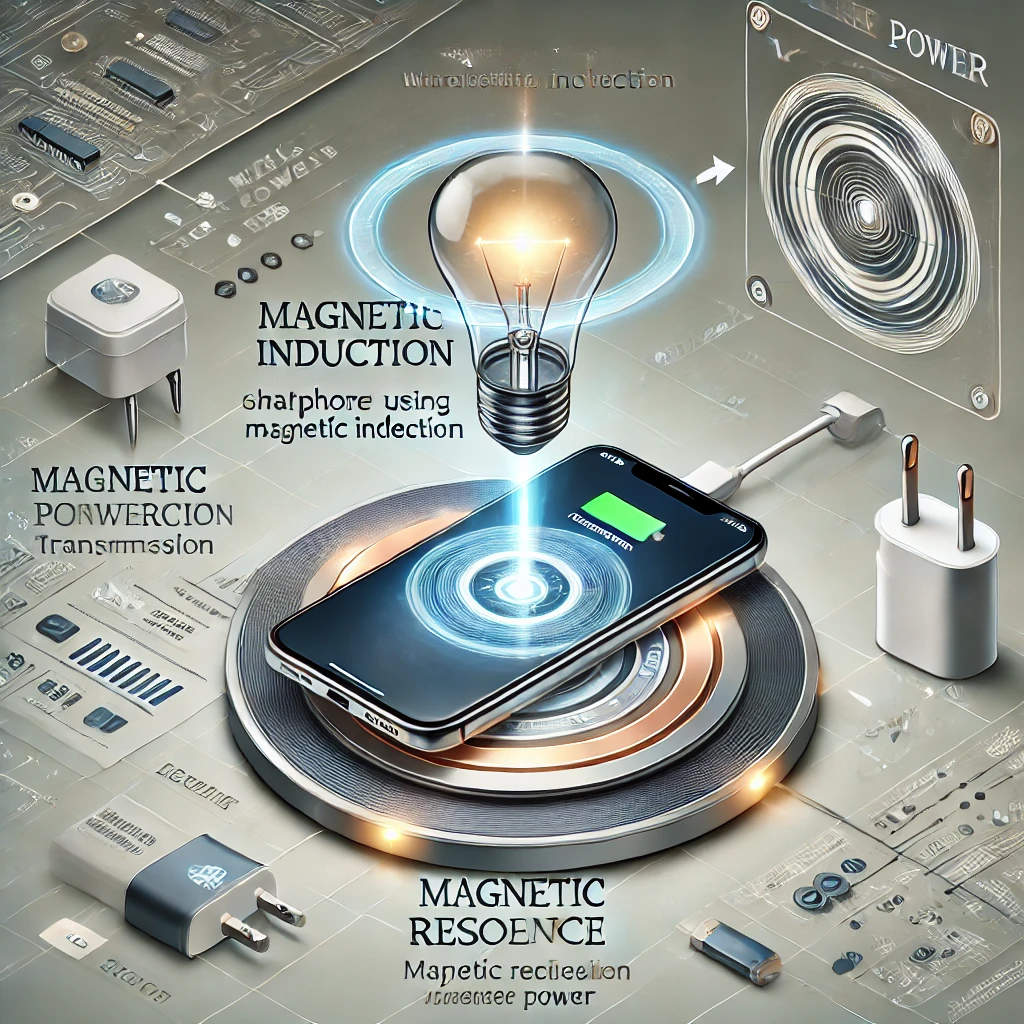Wireless power transfer technologies enable the freedom to move and use electronics, and include magnetic induction and magnetic resonance. Magnetic induction is efficient over short distances, while magnetic resonance can transmit power over longer distances. Research is needed to consider the advantages and disadvantages of each method, and if commercialized, various applications such as charging electric vehicles are expected.
Wirelessly transmitting power is less efficient than wired power, but it has the advantage of allowing electronics to be moved around freely. Wireless power transmission is a technology that utilizes electromagnetism to supply or use electricity, and there are two types of wireless power transmission methods: ‘magnetic induction method’ and ‘magnetic resonance method’.
Magnetic induction is similar to the principle of a transformer. A transformer has coils wrapped around a square-shaped iron core, and when an alternating current with ‘+, -‘ polarity is sent to the primary coil, it creates a magnetic field in the primary coil, just like moving a magnet to create a magnetic field. This magnetic field creates a current in the secondary coil, which is called induced current. Transformers have an iron core that can transfer the energy of the magnetic field well, but the magnetic induction method is a wireless power transmission without an iron core.
The advantage of magnetic induction is that it has a very high power transfer efficiency of over 90%. However, the problem is that the power transmission efficiency decreases rapidly if the transmitter, which is the first coil, and the receiver, which is the second coil, are separated by more than a few centimeters or if the centers of the transmitter and receiver do not match. In the case of mobile phones, the distance problem is solved by placing the phone on a charging pad, and coils are placed throughout the charging pad to increase the transmission efficiency between the transmitter and receiver to enable wireless charging. However, since cell phones use direct current, a rectifier is required before the charging stage to convert the alternating current induced from the first coil to the second coil into direct current.
It is also important to consider that magnetic induction has a high power transfer efficiency, which can be affected by electromagnetic waves. If other electronic devices in the surrounding environment are sensitive to electromagnetic waves, interference can occur, and electromagnetic shielding techniques are important to prevent this. This will allow the wireless power transmission system to operate more reliably.

The second transmission method is magnetic resonance. Resonance is a physical phenomenon in which tuning forks with the same natural frequency vibrate together when tapped on one of many different tuning forks. The resonance frequency is created by designing a primary coil and resonator to resonate in a magnetic field. The principle of magnetic resonance is to design a secondary coil and resonator to transmit the resonant frequency.
Due to these characteristics, magnetic resonance has the advantage of being able to transmit power over short distances of several meters, unlike magnetic induction. If this method is commercialized, many electronics that resonate with the transmitter could be used or charged without being plugged in. However, the coil size in the experimental stage cannot be applied to general home appliances, so it is necessary to miniaturize the coil. Therefore, research is needed to solve this problem.
In addition, standardization of frequency bands and related specifications are essential for the commercialization of magnetic resonance. Since confusion can occur when various devices use the same frequency band, it is necessary to set specifications in line with international standards so that multiple devices can operate smoothly. This standardization effort is underway around the world, and it’s leading to further advances in wireless power transfer technology.
Furthermore, the commercialization of a wireless power transfer system using magnetic resonance could transform electric vehicle charging. Currently, electric vehicles are charged by connecting cables at charging stations, but with wireless power transmission technology, it will be possible to install wireless charging pads in parking spaces and charge them just by parking. This will bring great convenience to electric vehicle users and will have a positive impact on the spread of electric vehicles.
Wireless power transmission technology has great potential for application in various fields, and it is expected that more research and development will be carried out in the future. It will make our lives more convenient and efficient.
